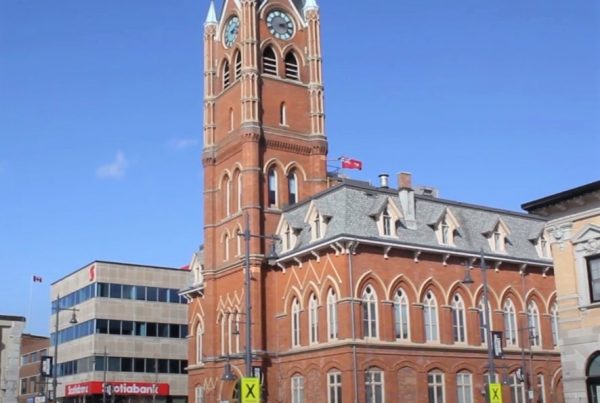Pantonium’s success with helping non-emergency medical transportation companies improve their dispatch process provides a good baseline to leverage the public transit market. Pantonium’s vehicle fleet management software capabilities help to reduce operating costs; these innovative capabilities can also help transit companies stay on budget by not only ensuring the company is operating at the most efficient level, but for cost-effectiveness to riders as well. The average cost of traveling one person-kilometre by car in Canada is 46¢. For public transit, it is 12 cents. According to the Canadian Urban Transit Association, this could result in an annual savings of $2,495 for every Canadian who uses public transit as opposed to their own car. With this in mind, it is important for transit operators continually look for innovative methods to provide a quality level of transportation to customers while balancing costs for the company.
One of the goals of most people in the transport industry is to constantly improving how vehicles get around, which happens to be the foundation of Pantonium’s EverRun software. EverRun is designed to automatically schedule and dispatch trips without human intervention, using real-time feedback to self-adjust the schedule throughout the day to ensure the fleet is running at optimal efficiency.
This capability can help transit authorities significantly improve their service levels and maximize their vehicle capacities while minimizing their costs. To help illuminate on these points, Pantonium VP of Sales Daniel Kain lends his expertise to some questions which may be on the minds of transit operators:
Q: Why is it important for transit operators to utilize fleet management software in 2015? How do you see vehicle management software affecting the transport business in the future?
A: I think the success of Uber and other alternative transportation operators has shown the transportation industry how the ride-share model can be successful as well as cost-effective. I strongly believe the ride-share model is where both public and private transportation management is headed, and fleet management technology is helping to make this possible.
Typically, consumers who do not drive have two options: 1) They take a taxi, where they are picked up from their location and dropped off at their desired destination for a sizeable charge, or 2) They take a fixed-route bus, which is substantially cheaper, but requires them to go to be picked up and dropped off at a less convenient fixed location.
What if these consumers could have the benefits of taxi service (desired pick-up and drop off spots) for a price closer to a fixed-route bus? This is ridesharing.
Previously, with manual scheduling and dispatching, the logistics of this model were far too expensive for the operator to offer at a price reasonable to the average consumer. However, with reduction in communication costs through the internet and mobile devices and optimization technologies like Pantonium’s EverRun, this model now makes sense as operators have the tools to maximize the capacities of their vehicles and lower their cost of each trip. The savings are then passed on to the consumer, who can then afford to take the trip.
Q: What are some of the challenges transit operators may be facing in the current business climate?
A: At the moment, the biggest challenge for transit operators is meeting their clients’ expectations. For on-demand services such as paratransit, riders expect to be transported within narrow time windows, making multi-loading a fleet extremely difficult. Anecdotally, this is why there are often instances when a paratransit vehicle is only carrying 1-2 passengers on-board, even though the capacity of the vehicle may be 12-15 persons; in order to meet on-time service goals, operators are forced to put more vehicles on the road than they may need. This is what makes Pantonium’s EverRun software so powerful; the ability to maximize multi-loading potential without sacrificing service level.
Another significant challenge is balancing operating margins. Public paratransit is one of the most heavily subsidized government services. For most operators, their riders may pay only a few dollars for a trip which could have costs of up to $10-$20. The remainder of this cost is subsidized by the government, which poses many challenges to an operator. In the effort to control paratransit costs, the service level can sometimes suffer. This is why finding tools to reduce marginal cost is crucial to transit operators.
Q: What advice would you give to transit operators looking to upgrade their current software systems?
A: Plan for the future, and embrace being process-oriented. Often, transit operators choose systems which work for the fleet they have currently, but not necessarily the fleet they may have in years to come. It’s important for a system to be scalable and accommodating to a rapid growth in service. For any system to be scalable, it must have clean processes, giving users simple repeatable steps to completing tasks which can be sustainable as demand grows.
Q: What is the main feature transport companies can take away from using Pantonium’s EverRun software?
A: EverRun gives transportation companies the ability to dispatch vehicles and drivers without human intervention. This is a huge advantage! For dispatchers managing a large fleet of vehicles, one of the biggest hurdles is being able to identify problems as they come up and then find the appropriate solution. It’s too easy for variables involved to get lost in the shuffle. The EverRun system uses real-time feedback and field data to identify issues (cancellations, delays, add-on trips, etc.) and re-optimize the day’s schedule without the need for dispatcher intervention. This way, one can be sure the fleet is running at maximum efficiency at any point in time.
For more information, please feel free to email us today at info@pantonium.com.



